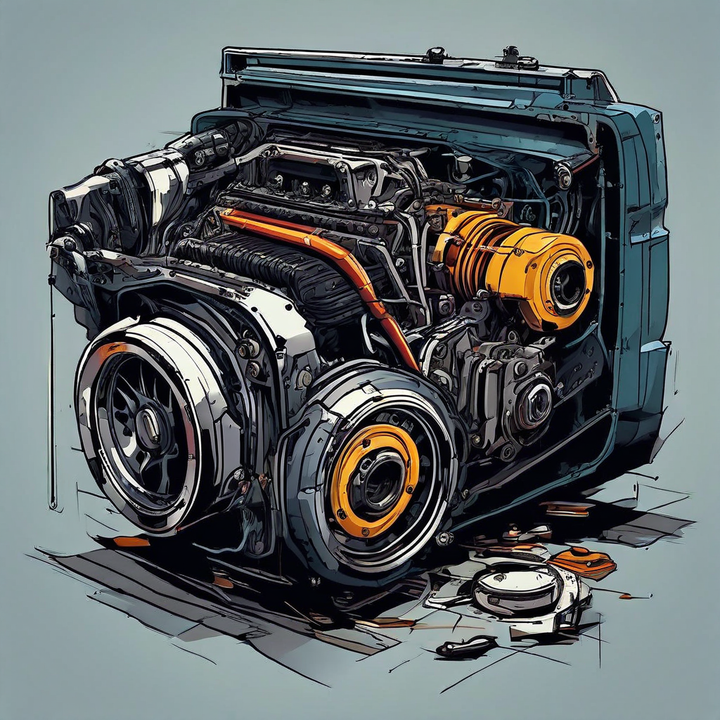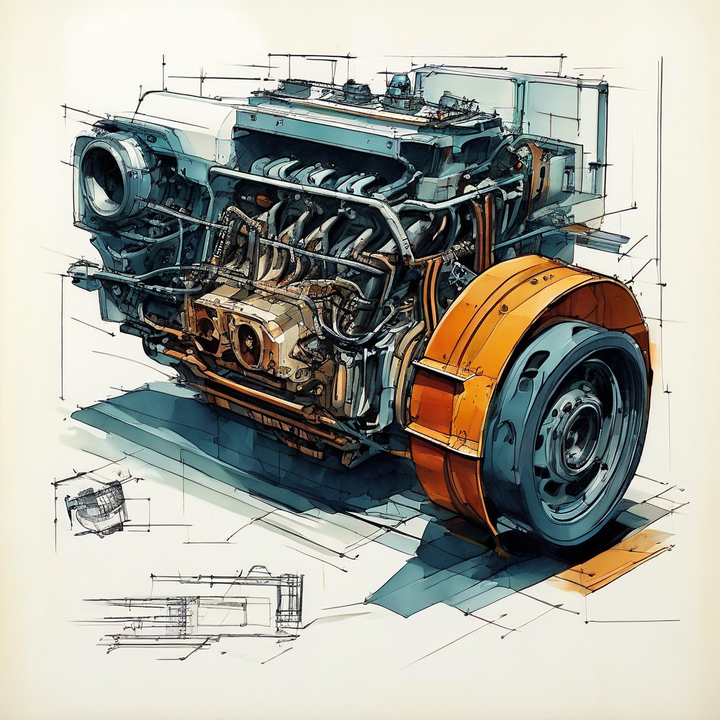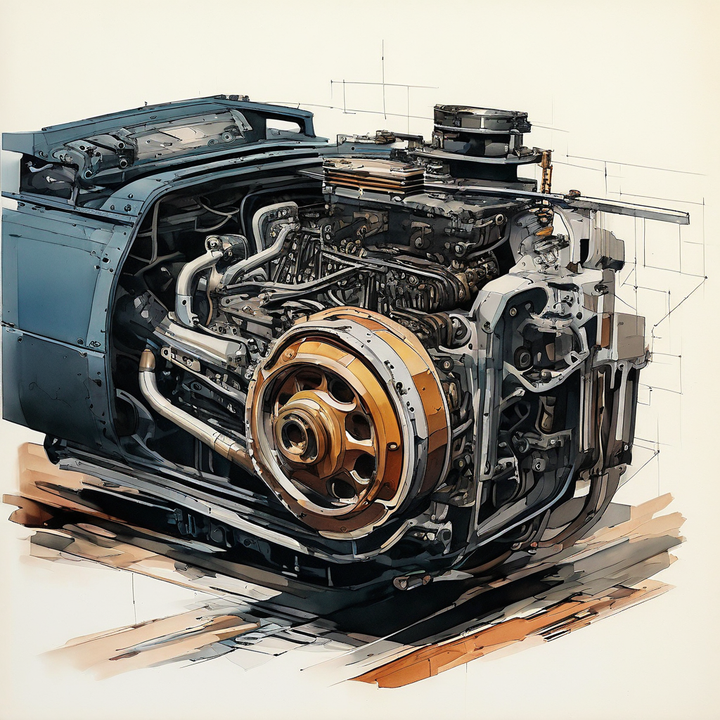


Motor mounts, also known as engine mounts, are an essential component in modern vehicles. They serve as the critical link between the engine and the vehicle's chassis, providing a secure and stable connection while effectively isolating vibrations and movements generated by the engine's operation.

Before we dive into the symptoms, let's briefly discuss what motor mounts are and their importance. Motor mounts are rubber-based components that secure the engine to the vehicle's frame or subframe. They act as cushions, absorbing vibrations and preventing excessive engine movement during operation. Without properly functioning motor mounts, your engine would essentially be a loose cannon, causing damage to various components and creating an unpleasant driving experience.
Like many automotive parts, motor mounts are subject to wear and tear over time. Here are some of the most common culprits behind their failure:
| Cause | Description |
|---|---|
| Age and Wear | Motor mounts are made of rubber, which can deteriorate, dry out, and crack due to heat and constant vibrations from the engine. As vehicles age, the mounts naturally degrade, leading to potential failures. |
| Fluid Leaks | Engine oil, coolant, or other fluid leaks can accelerate the degradation of the rubber in motor mounts. These fluids can cause the rubber to swell, crack, or become brittle, compromising the mount's integrity. |
| Road Incidents | Impacts from potholes, speed bumps, or other road hazards can dislodge or damage motor mounts, especially if they're already worn or weakened. |
| Aggressive Driving | Frequent harsh acceleration, hard braking, and aggressive cornering can put excessive stress on motor mounts, causing them to wear out faster than they would under normal driving conditions. |
As a mechanic, I've learned to rely on a combination of visual inspections, auditory cues, and vibration analysis to diagnose bad motor mount symptoms. Here's what you should look out for:

One of the first things I do is visually inspect the motor mounts themselves. I look for:
Cracks
Tears
Signs of wear on the rubber portion
Additionally, I check if the metal part of the mount shows any signs of:
Damage
Misalignment
Which could indicate a potential failure.
Pay close attention to any unusual noises coming from the engine bay, especially during:
Acceleration
Deceleration
Turning
Clunking, banging, or rattling sounds can be a clear indication that the engine is shifting or making contact due to a loose or broken mount.
Excessive vibrations in the cabin, steering wheel, or floorboard can be a telltale sign of worn motor mounts that are no longer effectively dampening engine vibrations. If you notice an increase in vibrations, especially at idle or during acceleration, it's time to investigate further.
| Symptom | Indication |
|---|---|
| Visible shifting or sagging of the engine during acceleration, braking, or cornering | The mounts are no longer securely holding the engine in place, allowing it to move more than it should. |
If you notice any of the above symptoms, it's crucial to address the issue promptly to prevent further damage. Here's a general overview of the repair process:
Inspect All Mounts
Support the Engine
Remove Old Mounts
Install New Mounts
Check Alignment
Even if only one mount seems bad, I recommend inspecting and potentially replacing all motor mounts. They're typically the same age and under similar stress, so if one fails, others may soon follow.
To safely replace the mounts, we need to raise and support the engine using a jack and jack stands to remove the weight from the mounts.
Following the specific instructions for your vehicle, we carefully remove the old motor mounts, which may require prying or hammering them out of position.
With the old mounts removed, we carefully position and secure the new motor mounts, torquing any bolts to the manufacturer's specifications.
After replacement, we ensure the engine is properly aligned with other components like the exhaust, driveshaft, and transmission to prevent additional issues.
While motor mounts can potentially last the life of the vehicle, I generally recommend replacing them every 5-7 years or 60,000-100,000 miles as preventative maintenance. Here are some additional tips to help prevent premature motor mount failure:
Regular Inspections
Proper Driving
Fluid Leak Repairs
Have your motor mounts inspected during routine maintenance like oil changes to catch any issues early.
Avoid aggressive driving habits that put excessive strain on the mounts, such as:
Frequent hard acceleration
Hard braking
Aggressive cornering
Address any engine fluid leaks promptly to prevent damage to the motor mounts and other components.
The cost to replace motor mounts can vary significantly depending on the vehicle make and model, as well as labor costs. Estimates range from around $200 for a single mount replacement (parts and labor) up to $1,000 or more for all mounts on some vehicles. Doing the work yourself can save on labor costs if you have the necessary tools and skills, but it's important to follow the proper procedures to ensure a safe and successful repair.
Bad motor mount symptoms may seem minor at first, but ignoring them can lead to more significant issues down the line. As a mechanic, I've seen firsthand the damage that can result from neglecting these vital components. By being aware of the signs, understanding the causes, and addressing the problem promptly, you can prevent further damage and ensure your vehicle's smooth and safe operation for years to come.
Remember, regular inspections and timely repairs or replacements are key to maintaining the health of your motor mounts and extending their lifespan. Don't hesitate to consult a professional mechanic if you're unsure about the condition of your vehicle's motor mounts or need assistance with the repair process.
Motor mounts secure the engine to the vehicle's frame or subframe, absorbing vibrations and preventing excessive engine movement during operation.
Look for cracks, tears, signs of wear on the rubber portion, and any damage or misalignment on the metal part of the mount.
Listen for clunking, banging, or rattling sounds coming from the engine bay, especially during acceleration, deceleration, or turning.
Excessive vibrations in the cabin, steering wheel, or floorboard can signify worn motor mounts that are no longer effectively dampening engine vibrations.
As preventative maintenance, it's generally recommended to replace motor mounts every 5-7 years or 60,000-100,000 miles.
It's advisable to inspect and potentially replace all motor mounts, even if only one seems bad, as they're typically the same age and under similar stress.
The process involves supporting the engine, removing the old mounts, installing new mounts, and checking the alignment of the engine with other components.
Frequent harsh acceleration, hard braking, and aggressive cornering can put excessive stress on motor mounts, causing them to wear out faster.
The cost can vary significantly, ranging from around $200 for a single mount replacement (parts and labor) up to $1,000 or more for all mounts on some vehicles.
Doing the work yourself can save on labor costs if you have the necessary tools and skills, but it's important to follow the proper procedures to ensure a safe and successful repair.

Sarah isn't your average gearhead. With a double major in Mechanical Engineering and Automotive Technology, she dived straight into the world of car repair. After 15 years of turning wrenches at dealerships and independent shops, Sarah joined MICDOT to share her expertise and passion for making cars run like new. Her in-depth knowledge and knack for explaining complex issues in simple terms make her a valuable asset to our team.












